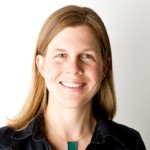The final action hearings for the 2015 International Green Construction Code were held in Ft. Lauderdale, FL in early October. GCCA Executive Director, Kurt Shickman and I attended the hearings to defend GCCA’s cool roof proposals and to fight to keep some anti-cool roof proposals out of the code. For the first time since GCCA began its cool codes program, we were joined by several representatives from the cool roofs industry. Specifically, many members of the Chemical Films and Fabrics Association made the trip to Ft. Lauderdale to testify in support of our cool roofs agenda.
GCCA was particularly focused on supporting two of its proposals: GG 166, which proposed an increase in the reflectivity levels for low sloped roofs (which was recommended for approval by the code development committee), and GG 163, which proposed expanding the cool roof requirement into climate zone 4a and 4b (which was recommended for disapproval by the code development committee). GCCA was also hoping to overturn the committee’s decision to support GG77, which proposed turning the existing cool roof requirement into a jurisdictional elective, and to keep GG 164 from passing, which moved the cool roof requirements into the energy chapter of the IgCC, therefore discounting the urban heat island benefits of cool roofs.
GCCA was very pleased to be able to negotiate a compromise with a number of its opponents at the hearing, specifically the Asphalt Roof Manufacturer’s Association and EPDM Roofing Association. As a result of that compromise, we were able to secure increased reflectance levels (albeit lower than what we had originally proposed), avert the jurisdictional elective, and keep the urban heat island chapter of the code intact. Our opposition secured an exemption for ballasted roofs in the cool roofs code, which we were opposed to, but were willing to compromise on to secure our other wins.
Unfortunately, we were unsuccessful in winning GG163, which would have expanded the cool roof requirement for low-slope roofs into climate zones 4a and 4b. Despite having excellent testimony, evidence, and representation, the momentum from the code development hearings was too strong. While we are disappointed, the vote was closer than it has ever been before. We are excited about working on future code development efforts along with our new industry partners.
Tags: building energy efficiency standards, cool roofs
